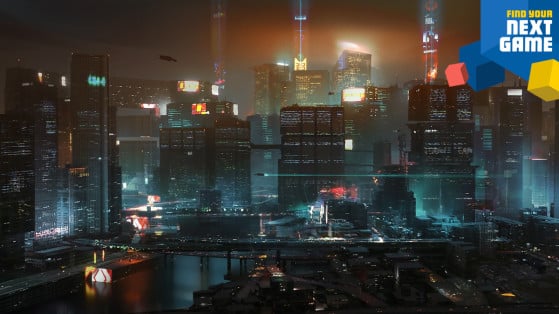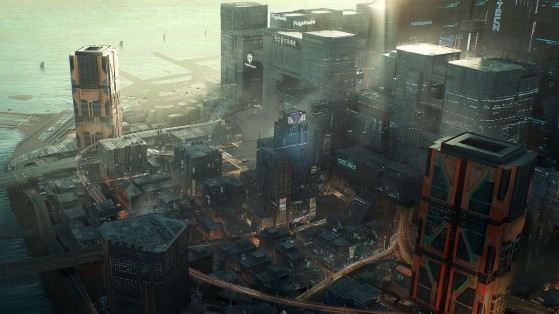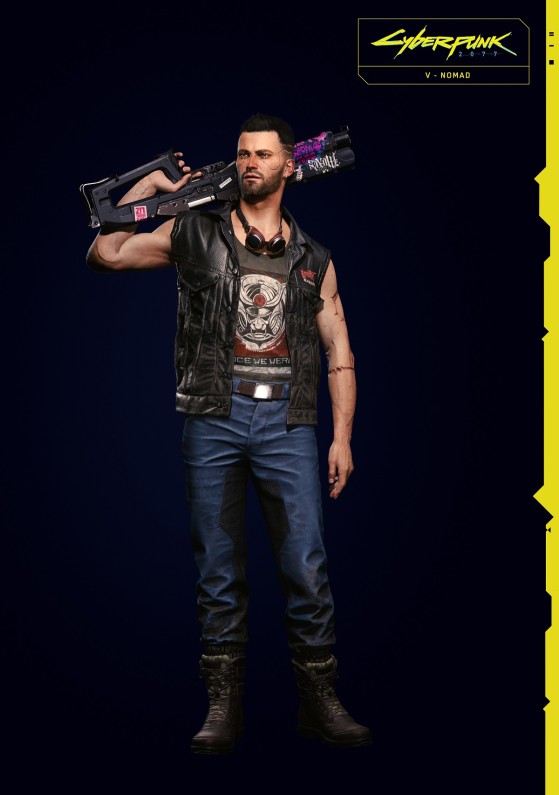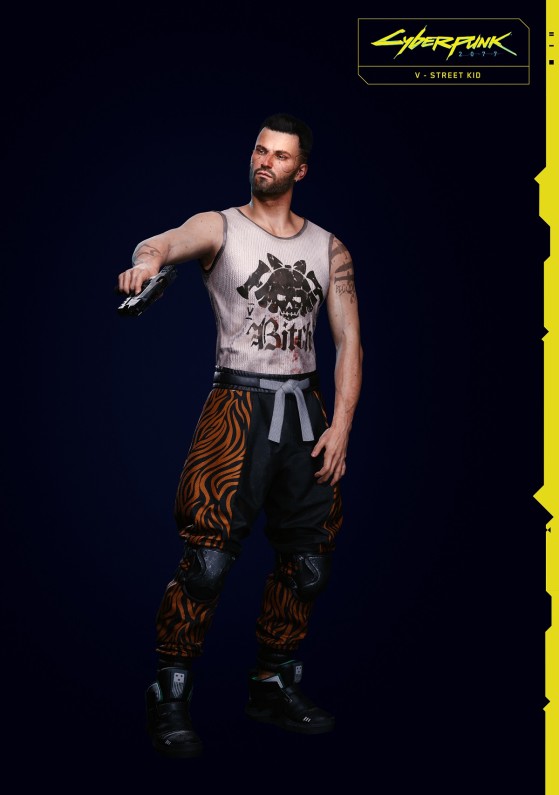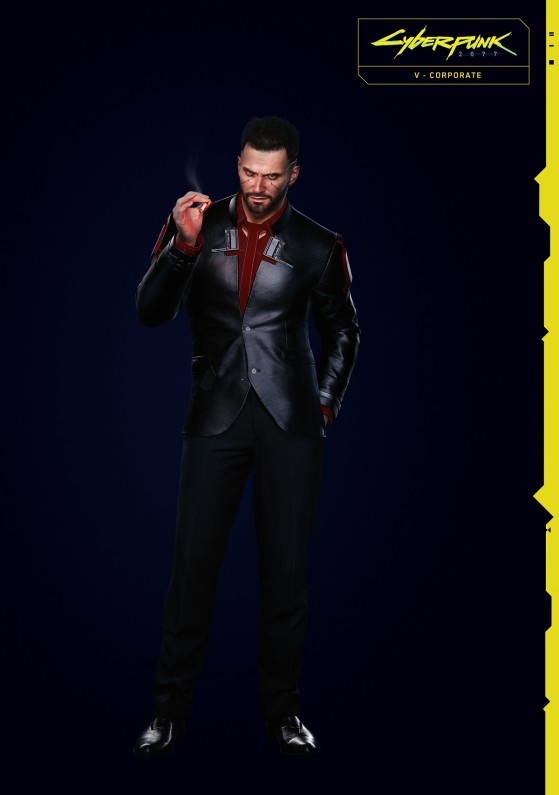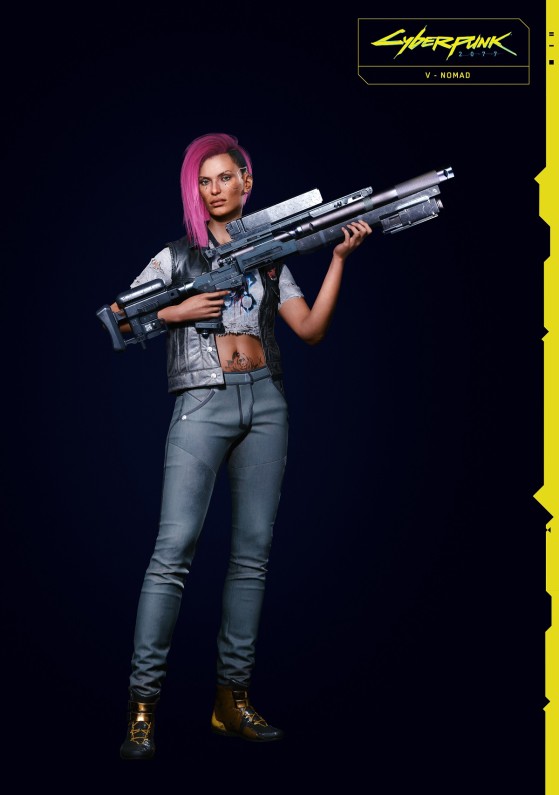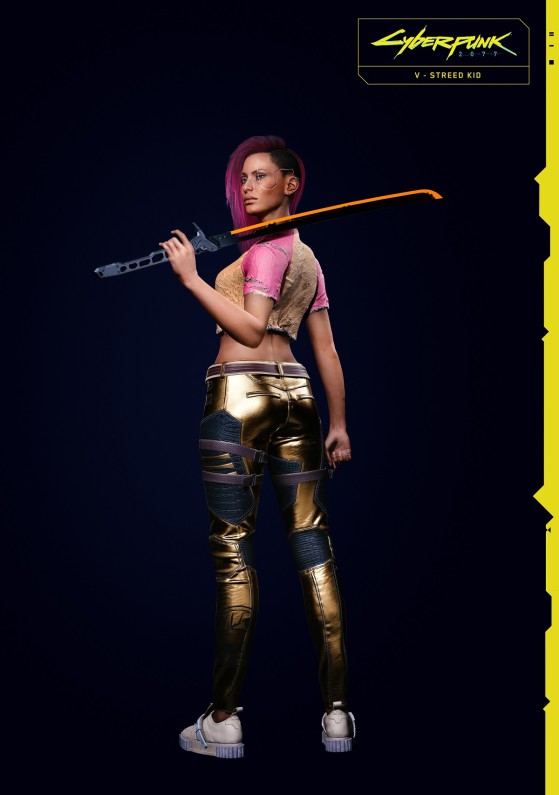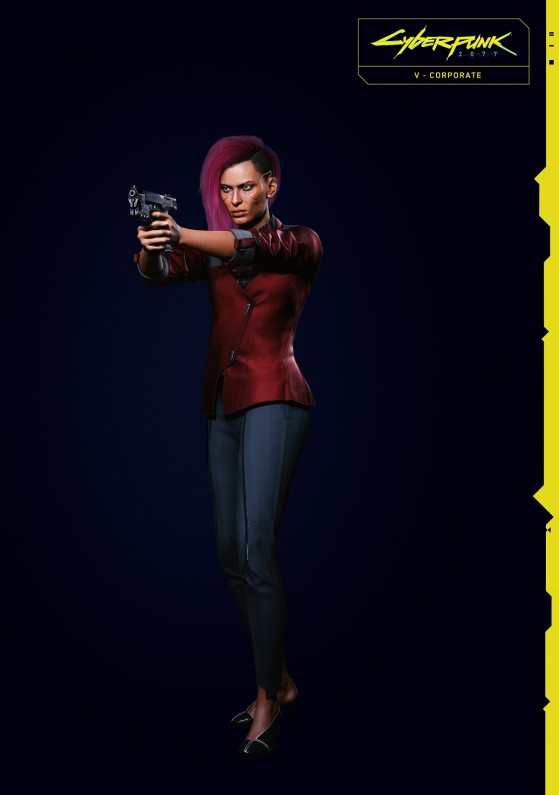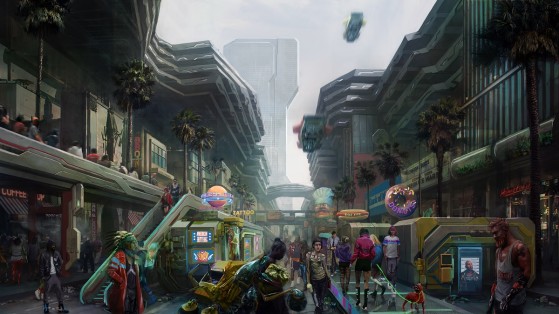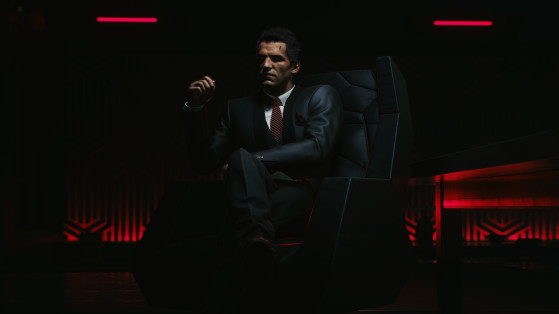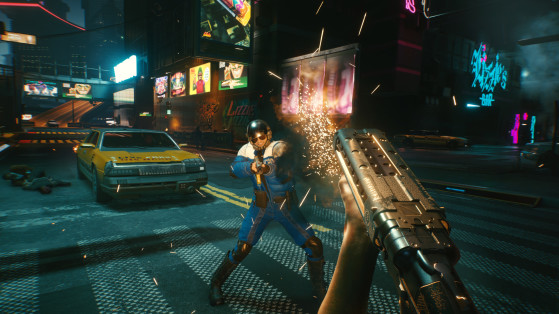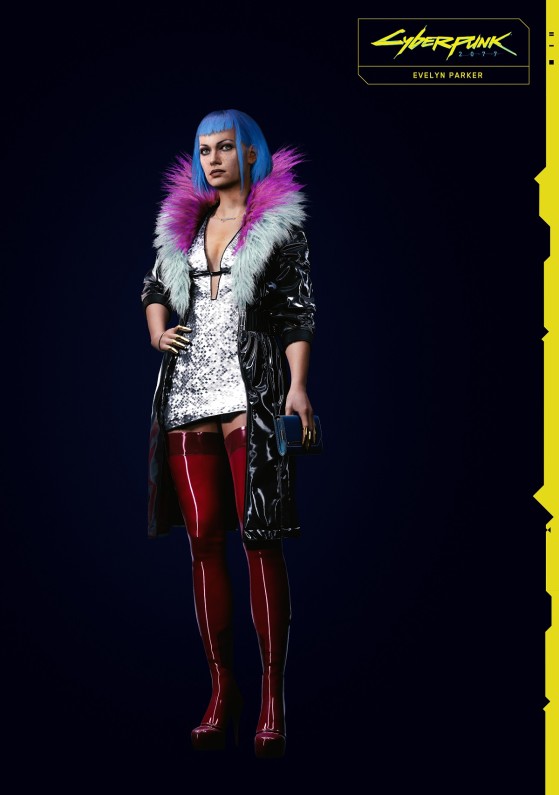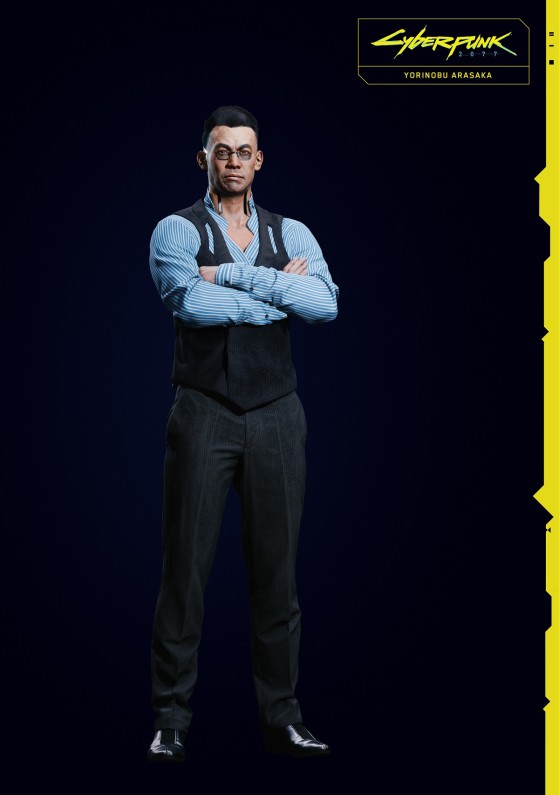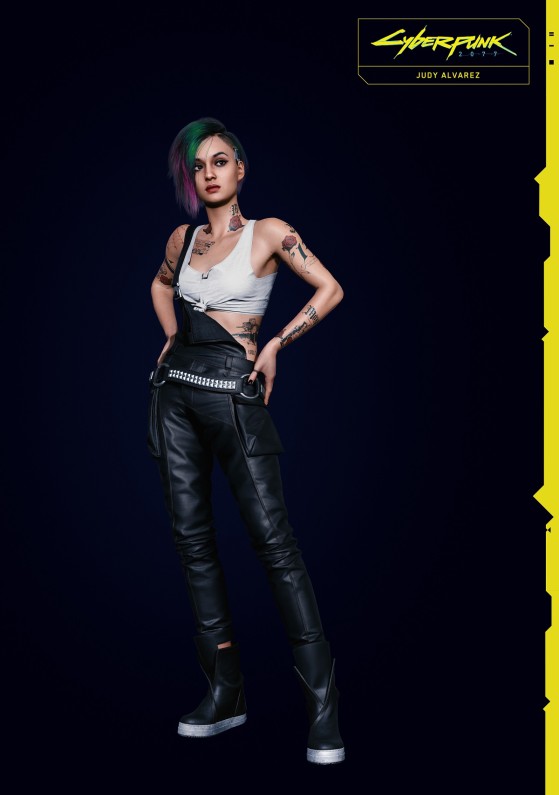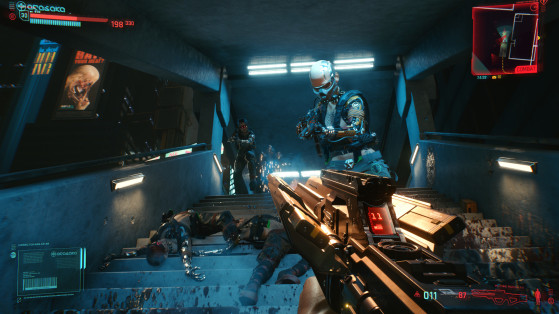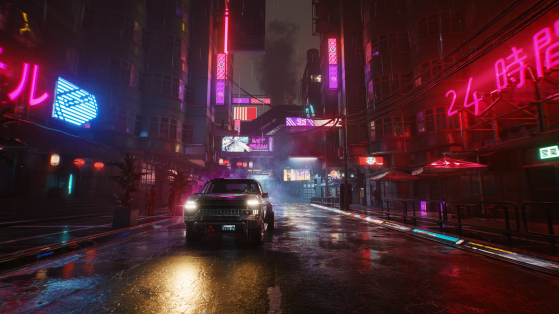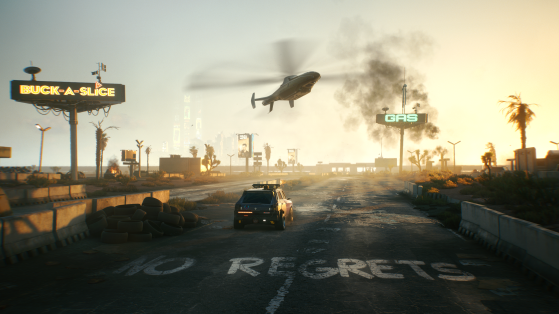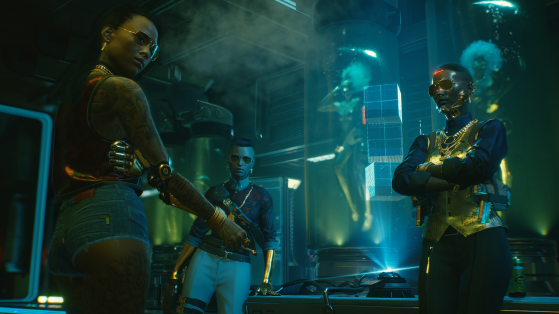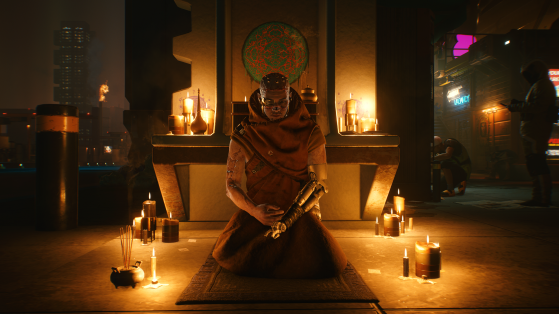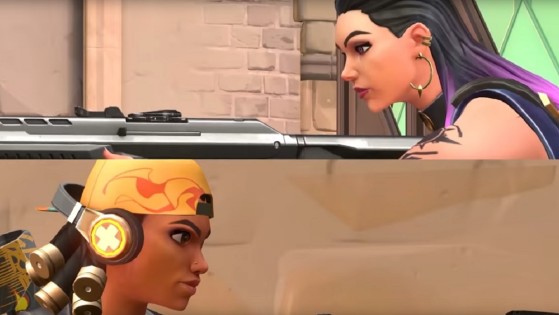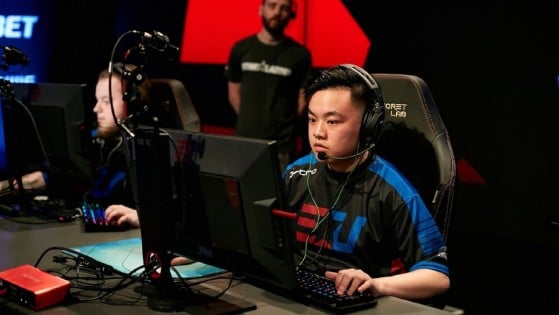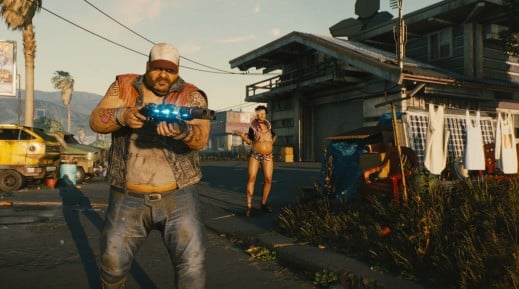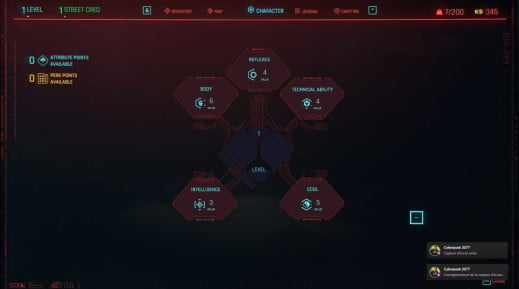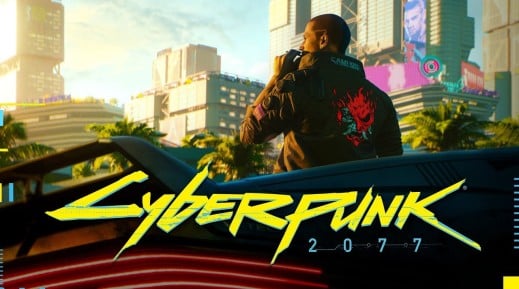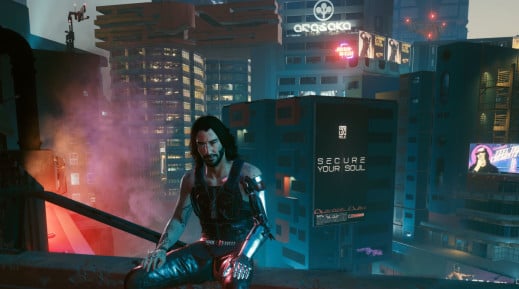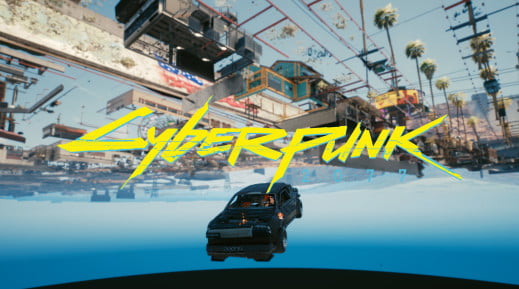Despite the postponement of Cyberpunk 2077 from September 17 to November 19, the Night City Wire steam, which was delayed with respect to the Black Lives Matter movement, took place on June 25, alongside a wave of press-released previews to our great pleasure. The game will be available on PC, PS4, and Xbox One, in addition to being playable on PS5 and Xbox Series X from launch, thanks to a planned upgrade to boost performance on next-gen consoles. There's also plans to port the game to Stadia towards the end of the year.
This is how were were able to to experience a prologue from the game for four hours. CD Projekt RED started development for this RPG in 2012, using the the both the Tabletop RPG Cyberpunk 2020 and the input of its creator, Mike Pondsmith, to help shape their game. As we well know, Cyberpunk 2077 offers up a dystopian society set in a cyberpunk universe where megacorporations and gangs rule over the Night City. Through a Parsec stream, we were able to directly play the game on Projekt RED's computers in Warsaw, so that they could retain complete control over their game. With no further ado, let's jump right into the heart of Night City.
V In the Night City
Straight away, Cyberpunk 2077 offers you the choice of three different paths: Nomad, Street Kid, or Corporate. Nomads like in a clan and patrol the Badlands, stealing whatever they need from wherever they can get it. Street Kids are named after the streets of the Night City, where only the strongest survive. Finally, Corporates come from the world of the megacorps, who know how to bend the rules and deal in secrets and volatile information. Each path offers a different experience of the Night City and the events that play out within its domain. We could only choose a single path during this preview, so we opted for the Nomads.
Next, we had to create our V, the character that you play as that allows you do to whatever you want. Through a character creation menu that was completely different to anything seen before, we were able to choose our gender and pick between a wide range of customisable features, such as: hair colour, haircut, eyes, mouths, eyebrow, noses, jaws, ears, tattoos, piercings, and cybernetic enhancements. We were also able to choose genitalia and a voice regardless of our chosen gender. You can very easily create a broad-chested, bearded male with female reproductive organs and the voice of a schoolgirl, or even give a female V a large or small penis and a deep voice.
In the same vein, typically feminine options like makeup and fake nails can be used by both males and females. These options can be easily justified in a universe where there is little distinction between genders and bodies are often enhanced by cybernetic enhancements. Besides these aforementioned choices, no other customisation options are available, other than the ability to hide your breasts. You won't be able to play as a dwarf, an obese giant, or a walking ball of muscle. Similarly, there's no class options for your character. Instead, you have seven points to split between Body (health, endurance), Intelligence, Reflexes, Technical, and Cool, which covers stress and stealth.
After abandoning our team to follow our own path, we get in radio contact with Willie McCoy, another Nomad from our clan, to ask them for one last favour: find Jackie Welles, with whom we have to take a contraband package into the heart of Night City. But in order to do so, we have to pass through the city's border, which we do effortlessly after paying off a guard. While we make the drive to Night City, we let Jackie take the wheel shortly after crossing the border, who elects to run from the police instead of stopping for the NCPD vehicles blocking the road. With the package seemingly belonging to the Araska Megacorp, we're thrown headfirst into a police chase and told to get rid of our pursuers by firing on them, as you can see in the video below.
After a tutorial offered through the guide of a Militech chip offered to us by Jackie, and a 6 month timsekip in which the two accomplices carry out a variety of small-scale contract work, we set out in search of Sandra Dorset, a mission that we were able to previously try out on video, but which allowed us to try out how the gunplay interacts with cover. We were then able to return to our apartment, where a stunning view over Night City awaited us in the elevator, as did a video on Arasaka's new "Relic" implant that promised immortality; a particularly relevant point in Cyberpunk 2077's story. We were then free to follow the main quest or to explore Night City's open world, which is stuffed with secondary quests like bare-knuckle brawls to please the city's army of gamblers.
Each district has its own set of petty crimes up to commit, all of which are too insignificant to bother the NCPD, each with their own reward. There's also a fixer who can offer you contract work, who is introduced by a briefing whenever you approach them. In Cyberpunk, it's a good idea to keep an eye on both the map and your telephone so that you're up to date with what you can do in each sector. This is how Dexter Deshawn, known as Dex is able to contact you to offer you a mission that you may well be aware of if you've been following the game closely. Dex wants you to recover a Militech Combat Bot prototype that has been stolen by Royce's Malestrom gang, and also physically help Evelyn Parker, a Corporate, steal the Relic chip from Yorinobu Arasaka. Our adventure takes us to meet a wide range of colourful characters, including Dr. Viktor Vektor, who helps you take on new implants, and Judy Alvarez, a member of The Mox gang. She will introduce you to Braindances, which are recordings of actual events that allow you, the player, to relive and experience the recording as if you were there yourself.
The beauty of the Night City
If there's one thing that could be said about the Night City, which is based in the free state of California, it's that it's a captivating experience. This colourful sprawling urban landscape can almost be said to be a main character in Cyberpunk 2077, given how crucial it is to the game's aesthetic. Throughout the city's streets, the impact of megacorps and gangs can be clearly felt, as can the rampant inequality that plagues the lower classes. Night City feels so alive that the simple act of driving through it feels immensely satisfying. Residents seem to attend to their daily routines and first person interactions feel convincing and polished. You can also admire the scenery while you converse with NPCs, especially in the backseat of an automobile.
Given that we were only able to try out the game by streaming it from Warsaw, we're unable to make any reliable statement on the graphical quality of Cyberpunk 2077. While the stills and videos shown in this article look stunning, the demo we played was of a lesser visual quality and frequently suffered from lag and pixelisation effects. There was one striking visual bug that affected the skin of NPCs, making it either seem too granular or too shiny. This may well just be down to the fact that the game was streamed and not played off of a download or a physical copy. Even still, there's still 5 more months before release; plenty of time for the developers to weed out any bugs (we came across three ourselves during our four hour game session). As for animations, they are a shining example of the game's attention to detail and its dedication to realism.
Cyberpunk 2077 features an extensive script of voiced dialogue. You can expect countless different interactions with NPCs, either through various different responses that you can choose from, or through passing comments to one another. We're hoping that more dialogue options will be added as the deadline draws nearer. Similarly to GTA, stepping into a car lets you choose between radio stations to accompany you on your journey. Unless youi've invested your points into strength, it's here where the comparisons with GTA stop, as you'll be unable to hijack a passing car unless you have the requisite strength to do so.
Just like in The Witcher 3, Cyberpunk sees fit to let the player decide on which course of action they wish to take. There's nothing to stop you, for example, from throwing yourself off the tallest building in sight, nor from moving down every person in sight. If you die, you'll simply return to the most recent checkpoint. However, if you commit a serious crime, this will draw the police to your location. We've been assured that in the final version they'll be a lot harder to beat, as we were able to blow throw them with ease during our playthrough. If we briefly return to character creation, the path that you chose for your V will play a huge part in your gameplay experience, as will your stat distribution. Your character's backstory will shut some doors, but will open others. Similarly, you won't be able to access certain conversations unless you fulfill certain conditions. Just like your actions, your dialogue choices can have immediate repercussions, or may have serious consequences later down the line.
Your actions will also have an impact on your relationships with gangs and coprorations and may even affect your ability to join certain organisations. The game takes heavy inspiration from its predecessor, Cyberpunk 2020, when it comes to the setting, with much of its pop culture being drawn from the RPG. Just like the Tabletop RPG, players can distribute their stats as they see fit to make their characters play out just as they like. Players won't have to settle on being a simple netrunner — you can also make your V be very agile and be a master of your choice of firearm, if you so desire.
The Cyberpunk experience
Given that Cyberpunk 2077 is an RPG, the game lets you distribute your skill points as you see fit, with skill areas being split into sections that can be unlocked depending on how you've filled out your skill tree. Similarly, the game invites you to explore the city, by foot or by car, with the latter having a range of immersive views up for offer. Players can even skip forward and hour, or buy materials from merchants to make a profit. You can find these items either by wandering around the city, or from looting the bodies of your defeated enemies. Encumbrance is a factor however, so you'll have to make decisions about your inventory sooner or later, though there is a skill that you can unlock that doubles the weight that you can carry.
There are two very useful items that you'll quickly become accustomed to during your time in Cyberpunk 2077: the "Bounce Back MK. I" and the "Max Doc" inhalers. These healing items take up a lot of bag space, but are vital if you plan on getting into any serious fights, whether it be a classic gunfight, or a melee encounter with either a katana or one of Arasaka's famous Mantis Blades. Players can also use stims to temporarily boost their combat effectiveness, as can be seen below.
Whether you're armed or unarmed, the principle is always the same in close combat situations: you can parry, counter, launch a flurry of fast attacks that can be parried, or launch a heavy blow, which must be charged, which is harder to counter. You should always keep an eye on your endurance, lest yoy want to run out of energy and be at your enemy's mercy at a crucial moment. While the gunplay feels rather good, melee encounters have a tendency to feel a bit dull and uninspired, and even feeling clunky at times.
This is in stark contrast to the vehicular combat, which we simply could not get enough of. Between your driver's erratic handling and the natural cover the city provides, getting a shot on your target is no simple task. In addition to direct combat, the game also lets you sneak around and use stealth to deliver lethal and non-lethal takedowns. Afterwards, be sure to hide the body, and make sure you keep an eye out enemies in red, who are likely to break free from your restraints.
There's still one crucial gameplay element that we've still yet to mention: Hacking. By scanning your enemies, you're not only able to get additional information (strength, weapons carried, resistances, weaknesses, e.t.c.), but you can also interact with the environment through the use of quickhacks. For example, you can use quick hacks to take control of a camera, to use to a screen to distract an enemy, or even meddle with a target's implants to make them drop a grenade or be momentarily imobilised. Whilst you're hacking, the game slows down to allow you enough time to plan out your next move. In addition, each hack has a certain cost which you must take into account. Later on, you'll be able to access Icepick, a program that will allow you to reduce the cost of these actions.
It's a shame that the different hacking options aren't so clearly defined, as it can be quite difficult to understand at first. But once you've got the hang of it, you'll be able to hack with no problem at all. Finally, braindances appear to be an effective way of obtaining information. Jumping into another person's experiences is a great way of extrapolating vital information, as you can rewind, advance, pause, or even move the camera to better explore the scene. This allows you to get a closer look at certain aspects of the recording, and you can even use a thermal or audio sensor to do so. Just make sure you don't stray too far from the person who recorded the braindance, otherwise you'll lose the signal. This may all seem a bit complicated, so why not watch the video below to get a better understanding of what this entails?
